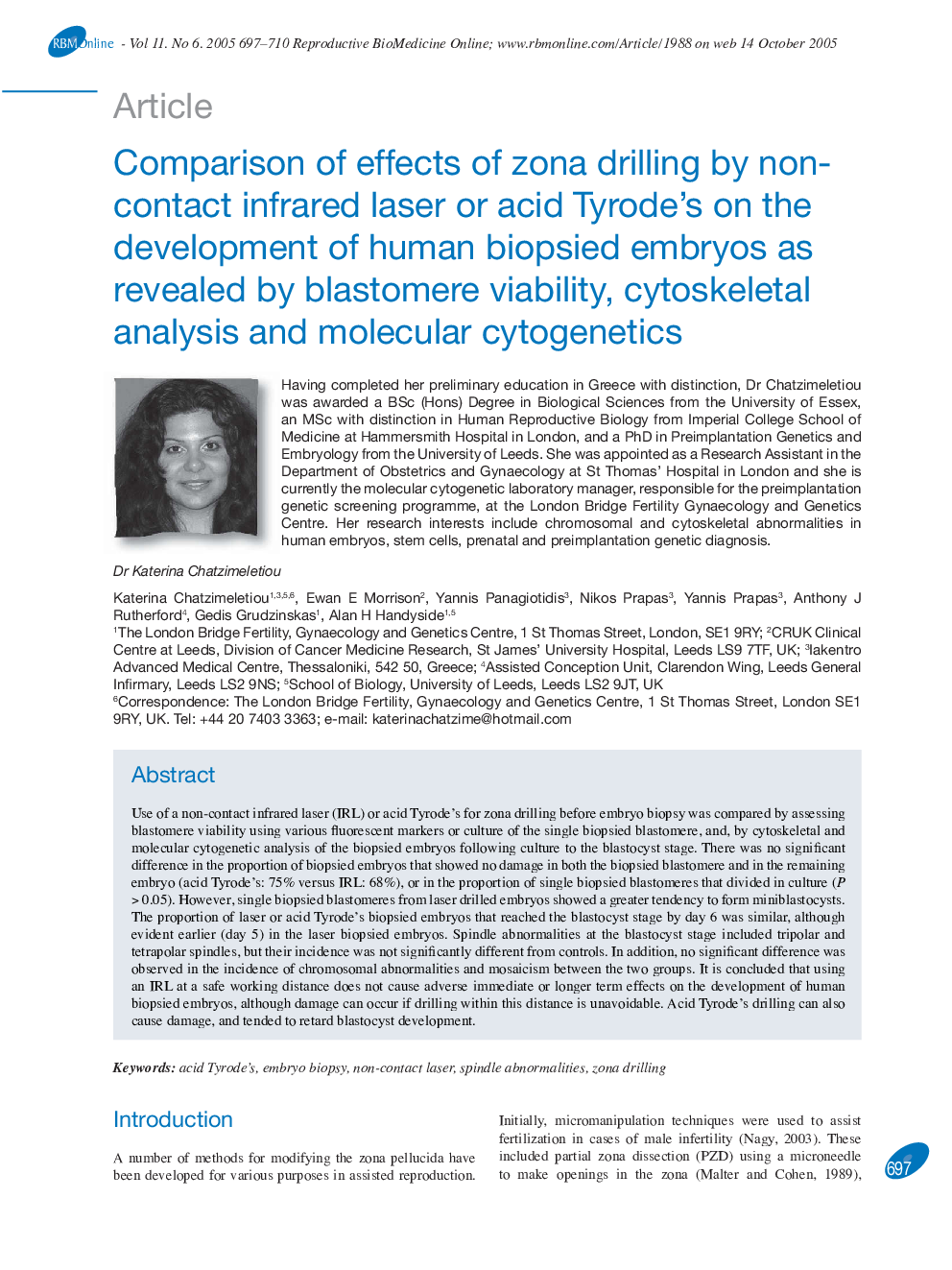| Article ID | Journal | Published Year | Pages | File Type |
|---|---|---|---|---|
| 9334835 | Reproductive BioMedicine Online | 2005 | 14 Pages |
Abstract
Use of a non-contact infrared laser (IRL) or acid Tyrode's for zona drilling before embryo biopsy was compared by assessing blastomere viability using various fluorescent markers or culture of the single biopsied blastomere, and, by cytoskeletal and molecular cytogenetic analysis of the biopsied embryos following culture to the blastocyst stage. There was no significant difference in the proportion of biopsied embryos that showed no damage in both the biopsied blastomere and in the remaining embryo (acid Tyrode's: 75% versus IRL: 68%), or in the proportion of single biopsied blastomeres that divided in culture (P > 0.05). However, single biopsied blastomeres from laser drilled embryos showed a greater tendency to form miniblastocysts. The proportion of laser or acid Tyrode's biopsied embryos that reached the blastocyst stage by day 6 was similar, although evident earlier (day 5) in the laser biopsied embryos. Spindle abnormalities at the blastocyst stage included tripolar and tetrapolar spindles, but their incidence was not significantly different from controls. In addition, no significant difference was observed in the incidence of chromosomal abnormalities and mosaicism between the two groups. It is concluded that using an IRL at a safe working distance does not cause adverse immediate or longer term effects on the development of human biopsied embryos, although damage can occur if drilling within this distance is unavoidable. Acid Tyrode's drilling can also cause damage, and tended to retard blastocyst development.
Keywords
Related Topics
Health Sciences
Medicine and Dentistry
Obstetrics, Gynecology and Women's Health
Authors
Katerina Chatzimeletiou, Ewan E Morrison, Yannis Panagiotidis, Nikos Prapas, Yannis Prapas, Anthony J Rutherford, Gedis Grudzinskas, Alan H Handyside,
